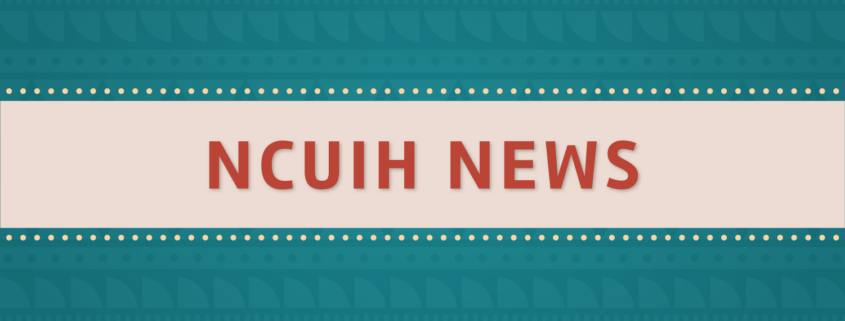Fact Sheet: Impact of COVID-19 Pandemic on Third-Party Reimbursements for the Indian Health System
By: Shervin Aazami, Director of Congressional Relations, National Indian Health Board, saazami@nihb.org; Julia Dreyer, Director of Federal Relations, National Council of Urban Indian Health, jdreyer@ncuih.org;
April 2020
Fact Sheet: Impact of COVID-19 Pandemic on Third-Party Reimbursements for the Indian Health System
Priority: Create a $1.7 billion third-party reimbursement relief fund for Indian Health Service (IHS), Tribes and Tribal organizations, and urban Indian organizations (UIOs)
Issue
The COVID-19 pandemic has upended many parts of the Indian health system. As states enforce shelter in place orders, require health care providers to cancel non-emergent procedures, and as social distancing guidelines continue, IHS, Tribal and UIO (collectively “I/T/U”) sites are seeing their patient volumes plummet. Some I/T/U facilities have the capacity to make the transition to telehealth-based service delivery for some routine and non-emergent procedures, but this is not an option for all sites or all procedures. Reduced patient visits and services being offered result in less third-party reimbursements from payers such as Medicare, Medicaid, the Veterans Health Administration (VHA), and private insurance.
- Because of the chronic underfunding of IHS, most, if not all, of the more than 360 Tribal Nations that elect to administer their healthcare programs through Self-Governance agreements must supplement funds received from IHS with third-party reimbursements. For some Tribes, third-party collections can constitute over half of their operating budgets for healthcare.
- Tribal Nations have experienced significant reductions in third-party reimbursement—ranging from $800,000 to over $5 million per Tribe over the last 30 days—as a result of suspended services and stay at home orders.
- In Arizona, initial estimates for March 2020 show that IHS and Tribal third-party collections from Medicaid alone were down nearly $26 million compared to February 2020. These losses are likely underestimated because the Medicaid claims submission process can take up to 12 months in the state.
- When extrapolated across the 360 Tribally-run health programs, losses are estimated to be higher than $1 billion for just one month.
- Federally-operated IHS facilities are also heavily reliant on third-party collections to supplement its appropriation.
- IHS has not publicly released information on third-party collections as a result of COVID-19, but IHS officials indicated they are experiencing reductions. IHS reported to the Government Accountability Office (GAO) in 2019 that it increasingly relies on third-party collections to pay for ongoing operations such as staff payroll, and expansion of on-site services.
- Reductions in third-party collections are forcing IHS and Tribal sites to further expend limited Purchased/Referred Care (PRC) funds.
- For UIOs, third party reimbursement dollars equal more than triple the annual appropriation to the Urban Indian Health line item in the IHS budget. Through mid-March 2020, UIOs reported an average of $500,000 in lost third-party reimbursements, while larger full ambulatory UIOs reported losses of more than $1.5 million.
Congress must establish a $1.7 billion relief fund for I/T/U facilities to replenish lost third-party reimbursement dollars. Without this relief, it will lead to even more rationed healthcare and jeopardizes the sustainability of some I/T/U facilities.
Background
The IHS is the most chronically underfunded federal healthcare system, with $3,779 in per capita medical expenditures in FY 2018 compared to $9,409 in national per capita health spending that same year. Congress has long recognized the unique role of third-party reimbursements from Medicare, Medicaid, VHA, and private insurance in supplementing the chronic underfunding of IHS. For decades, these third-party payers have played a central role in maintaining the fiscal stability of IHS, Tribal, and urban Indian (collectively “I/T/U”) health systems, and in furthering the federal Trust and Treaty obligations to provide quality healthcare to all Tribal Nations and American Indian and Alaska Native Peoples.
Quick Facts
- In FY 2019, federally-operated IHS facilities alone collected $1.14 billion in third party reimbursements, with the vast majority ($995 million) derived from Medicare and Medicaid.
- For Tribally-operated health programs, third-party dollars can play an even more crucial role in financing healthcare services. Up to 50-60% of some Tribal healthcare budgets are derived from third-party payers like Medicare and Medicaid.
- UIOs are also heavily reliant on third-party dollars to supplement their healthcare resources. From 2014 to 2018, third-party reimbursements at UIOs increased 16% annually.
Benefit of Third-Party Reimbursement Dollars
Over the last several years, I/T/U facilities have experienced a significant increase in third-party reimbursements. At federally-operated IHS sites, third-party reimbursements from Medicare, Medicaid, and private insurance increased by 51% from 2013 to 2018. These dollars are then reinvested in the I/T/U system to bolster availability of healthcare services and expand care access.




Leave a Reply
Want to join the discussion?Feel free to contribute!